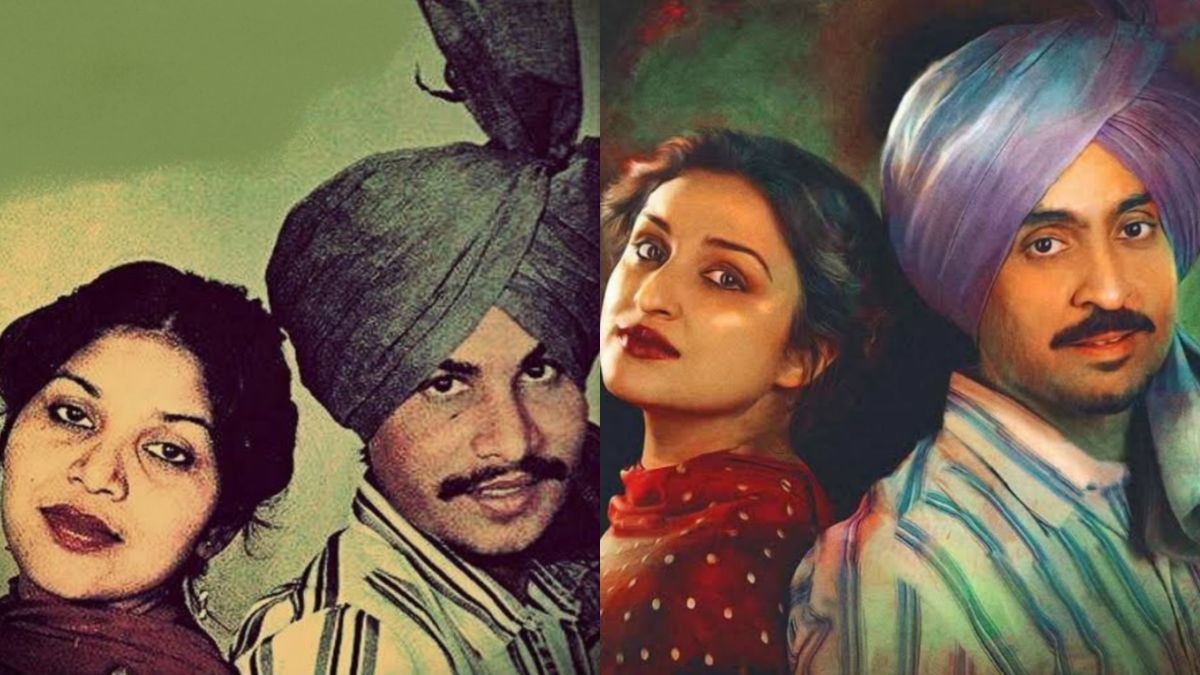April 16 (Punjab Khabarnama) : Director Imtiaz Ali’s latest film, Amar Singh Chamkila, has taken the audience by storm. Diljit Dosanjh’s portrayal of Chamkila and Oscar-winner AR Rahman’s music has been hailed unanimously and there’s renewed interest in the story of the ‘Elvis of Punjab’.
However, there have been several films made earlier on Amar Singh Chamkila, one of which is Mehsampur. Made in 2018 by director Kabir Singh Chowdhry, Mehsampur is a mockumentary that won numerous awards, including the Grand Jury Prize at MAMI 2018. In this exclusive chat with Hindustan Times, Mehsampur director talks about his film, meeting one of Chamkila’s alleged killers and his journey into Chamkila’s life.
How did you get the idea to make a mockumentary about Amar Singh Chamkila?
In 2014, my friend and writer Akshay Singh and me talked about making a film. Our conversation delved into a figure from my childhood in Punjab, Chamkila, whose story intrigued me. Chamkila, along with Amarjot, were renowned Punjabi musicians, and Chamkila’s untimely death at 27 placed him in the somber company of Jimi Hendrix, Janis Joplin, Jim Morrison, and Kurt Cobain in the infamous “27 club.”
This discussion sparked a journey into research for a potential story on Chamkila. We began in Ludhiana, meeting with various individuals connected to Chamkila and immersing ourselves in the world of Akhadas and music. Over six months, we visited the places Chamkila frequented, accompanied by Lal Chand, Chamkila’s surviving dholak player from the tragic day in Mehsampur, and his manager Kesar Singh Tikki.
Lal Chand’s presence was pivotal as he vividly recreated the scene of Chamkila’s assassination in Mehsampur, even showing us where he discarded his dholak after being shot. It felt like a haunting reenactment of the crime. During our time there, a local man approached us, recognizing Lal Chand as the sole survivor of that incident. He shared a remarkable story about finding Lal’s dholak years later, by a combine harvester during the harvest in 1988.
Driven by this new lead, we embarked on a quest across villages to locate Lal’s dholak but sadly couldn’t find it. Nevertheless, our research continued, delving into the tumultuous era of Punjab in the 1980s, exploring facets of the Khalistan movement and interactions with individuals from both sides, including those involved in the police force.
As we accumulated insights and experiences, Akshay began work on the screenplay for Lal Pari, encapsulating the essence of our discoveries and the turbulent times of Punjab. However, our trajectory took an unexpected turn when I received an offer to direct a film, backed by someone with resources to spare.
Fuelled by our recent Chamkila immersion, we decided to experiment with a narrative around the characters we encountered, pushing the boundaries of form in what I like to call ethnographic fiction. My own recurring nightmares about Mehsampur’s aftermath, always centered on an elusive dholak fused into a tree, this served as an inspiration for Mehsampur.
The dholak player Lal Chand, manager Tikki and singer Sonia were part of your film. What was the most striking aspect you discovered about Chamkila through them?
Incorporating Lal Chand, Tikki, and Sonia into our film was a deliberate choice to blend reality with fiction. Through their narratives, we got an insights into Chamkila’s world, although we treated much of it as a blend of hearsay and intricate truths, ripe with potential for fictional exploration.
What stood out most was the space they inhabited—a realm between fact and fiction—where real people like them were placed in fictional scenarios, giving rise to events that may or may not have occurred but resonated with a deeper truth. This approach allowed us to craft Mehsampur as a narrative that danced on the line between reality and imagination, capturing the essence of Chamkila’s enigmatic legacy.
Did the three give you a sense of how much Chamkila was loved for his songs (despite the vulgarity, etc) on one hand and hatred as well on the other hand? If yes, in what way?
Yes, the three individuals did give me a sense of how much Chamkila was both loved and hated for his songs. On one hand, he was adored by a wide audience, including old women and children, who appreciated his music and performances. He had a significant fan base and dominated the music scene, causing jealousy and heartburn among other singers who were not able to compete with his popularity.
On the other hand, Chamkila faced criticism and backlash for his lyrics, which some considered vulgar. However, it was explained that Chamkila used double-meaning lyrics as a form of social commentary and to engage his audience in a different way. This aspect of his artistry was seen as a way of challenging caste, class and sexual norms and generating conversation among his listeners. We cannot forget that Chamkila was a Dalit by caste and you can imagine how the upper castes may react losing their business with Chamkila’s rise.
Overall, it was clear that Chamkila’s music was complex and multifaceted, with layers of meaning that went beyond simply being labeled as vulgar. His performances with Amarjot showcased their skill in engaging with the audience and pushing the boundaries of traditional music performance. In this way, they were able to express themselves authentically and connect with their fans on a deeper level.
You said that you spent time with one of Chamkila’s killers who is still alive. Did you get any sense of retribution and reasoning as to why they did it?
Spending time on the ground in Punjab pursuing Chamkila’s story, I inevitably crossed paths with one of Chamkila’s killers who is still alive (it is all hearsay). While I did get some insight into the motivations behind the act, I wouldn’t put too much weight on it. The atmosphere in Punjab during those days was chaotic and lawless, where hiring guns for nefarious purposes was not uncommon. It was a time when personal vendettas were settled with violence, and individuals resorted to hiring others to carry out their dirty work. In such a volatile environment, retribution and reasoning often took a backseat to the ruthless pursuit of power and control. So whether it was professional jealousy, discriminatory hatred towards his caste, conjuring up of a puritanical narrative against his style of music and other unknown reasons, is yet to be fearlessly uncovered.
Why do you think Chamkila’s murder has been left unsolved?
I believe Chamkila’s murder has been left unsolved for a variety of reasons. One possible reason could be the complexity of the case, with multiple potential motives and suspects involved. Additionally, the passage of time may have made it more difficult for investigators to gather sufficient evidence or witness testimony. It’s also possible that there were political or societal pressures at play, hindering the investigation. Overall, the combination of these factors may have contributed to the mystery surrounding Chamkila’s murder remaining unsolved.
What will your next Lal Pari’s focus on?
As I mentioned Lal Pari is the film we set out to make Mehsampur was the prologue in this world of Chamkila.



